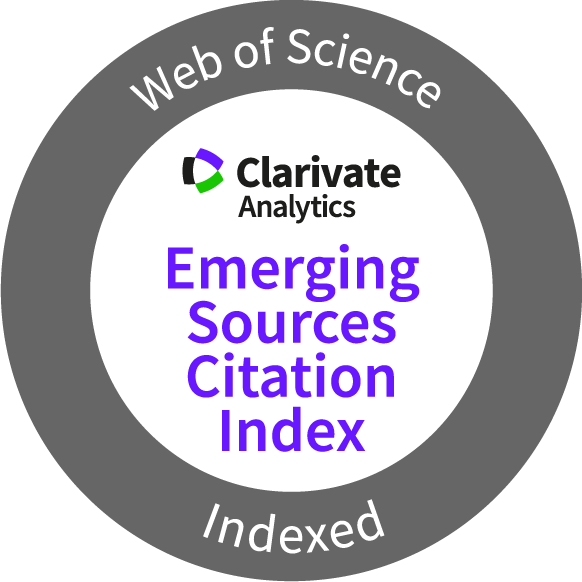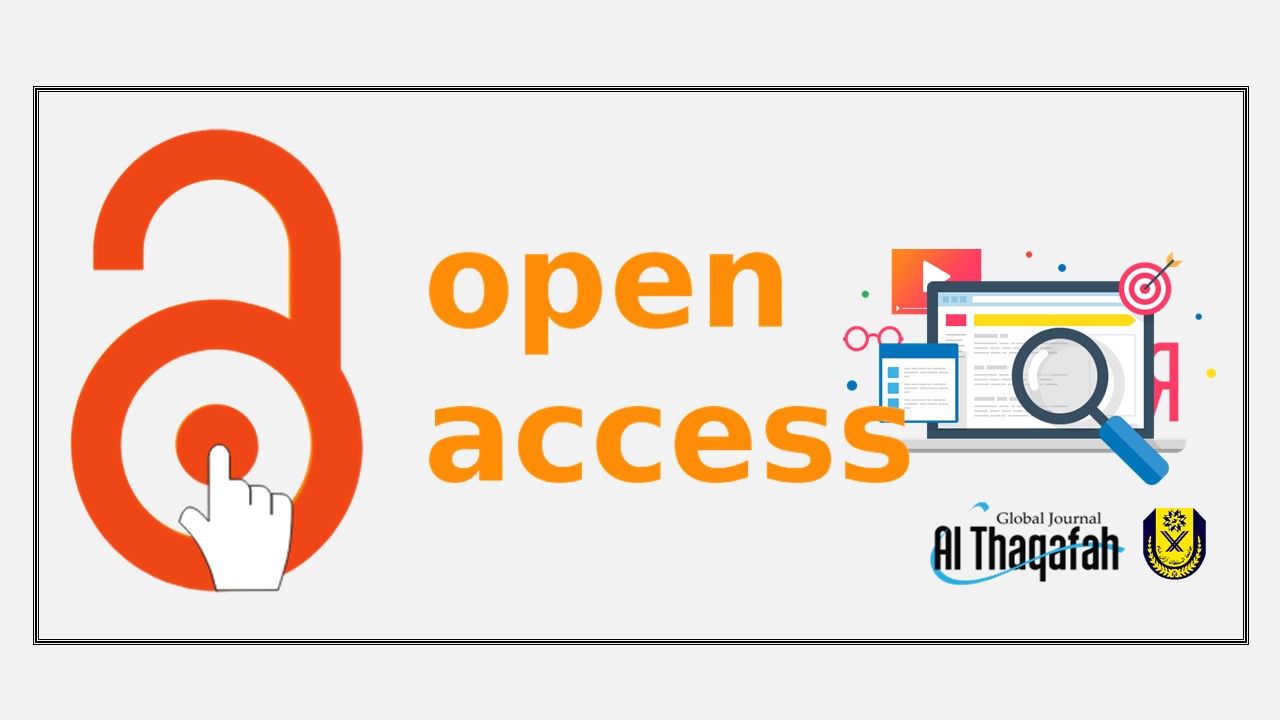Bridging Gaps in Online Arabic Language Instruction: Addressing Key Challenges in Higher Education Institutions
DOI:
https://doi.org/10.7187/GJATSI122024-8Keywords:
Online learning, Online Arabic language instruction, Language teaching challenges, Foreign language instructions, Higher educationAbstract
The rapid shift to online education, accelerated by the global pandemic, has highlighted significant challenges in Arabic language instruction, particularly in Malaysia's public higher education sector. This study investigates the key challenges, strategies, and skills required for effective online foreign language instruction in higher education institutions in Malaysia. Four main themes emerged through interviews with five Arabic language instructors: online teaching and learning facilities, delivery platforms, student attitudes and behaviours, and learning outcomes. Significant challenges include unreliable internet connectivity, student disengagement, and difficulty assessing language proficiency. Instructors have responded by adopting strategies such as recorded lectures, interactive activities, and tailored instruction, aligning with modern pedagogical practices. The findings underscore the need for comprehensive online Arabic language education skills, including pedagogical, managerial, and content-specific skills. This complexity is further highlighted by the practical implications of the study, which include a focus on student-centred approaches, technological investment, and continuous professional development. While the study's reliance on self-reported data limits generalizability, it offers valuable insights into addressing the complex challenges of online Arabic language instruction as a foreign language. Future research should explore the effectiveness of specific interventions and the contextual factors influencing online Arabic language education.
References
Albirini, A. (2015). Modern Arabic sociolinguistics: Diglossia, variation, codeswitching, attitudes and identity (First edition). Routledge. https://doi.org/10.4324/9781315683737
Albrahim, F. A. (2020). Online teaching skills and competencies. Turkish Online Journal of Educational Technology - TOJET, 19(1): 9-20.
Amran, H. A. and Majid, R. A. (2024). Learning strategies for twice-exceptional students. Global Journal Al-Thaqafah, 9(1): 37-54. https://doi.org/10.7187/GJATSI052019-4
Ananga, P., and Biney, I. K. (2021). Comparing face-to-face and online teaching and learning in higher education. MIER Journal of Educational Studies Trends & Practices, 7(2): 165-179. https://doi.org/10.52634/mier/2017/v7/i2/1415
Bao W. (2020). COVID-19 and online teaching in higher education: A case study of Peking University. Human Behavior and Emerging Technologies, 2(2): 113-115. https://doi.org/10.1002/hbe2.191
Elzainy, A., El Sadik, A., and Al Abdulmonem, W. (2020). Experience of e-learning and online assessment during the COVID-19 pandemic at the College of Medicine, Qassim University. Journal of Taibah University Medical Sciences, 15(6): 456-462. https://doi.org/10.1016/j.jtumed.2020.09.005
Ferri, F., Grifoni, P., and Guzzo, T. (2020). Online learning and emergency remote teaching: Opportunities and challenges in emergency situations. Societies, 10(4): 1-18. https://doi.org/10.3390/soc10040086.
Gomaa, Y. A. (2024). Deciphering linguistic and cultural hurdles in English-Arabic media translation: Insights from the BBC online news articles. Cadernos de Tradução, 44(1): 1-22. https://doi.org/10.5007/2175-7968.2024.e94510
Guillén, G., Sawin, T., and Avineri, N. (2020). Zooming out of the crisis: Language and human collaboration. Foreign Language Annals, 53(2): 320-328. https://doi.org/10.1111/flan.12459
Hinnawi, P. D., Abdel-Rahim, A.P., and Azzam, M.S. (2023). Effectiveness of distance e-learning in teaching and learning Arabic for non-native speakers: An-Najah's Arabic for non-native speakers institute as a model. Global Journal Al-Thaqafah, 13(2): 179-211.
https://doi.org/10.7187/GJAT122023-11
Hodges, C., Moore, S., Lockee, B., Trust, T., and Bond, A. (2020). The difference between emergency remote teaching and online learning. https://er.educause.edu/articles/2020/3/the-difference-between-emergency-remote-teaching-and-online-learning
Hofer, S. I., Nistor, N., and Scheibenzuber, C. (2021). Online teaching and learning in higher education: Lessons learned in crisis situations. Computers in Human Behavior. 121: 1-10. https://doi.org/10.1016/j.chb.2021.106789
Hung, L. N. Q., and Bao, T. L. Q. (2023). Comparing the effectiveness of online and onsite learning in English proficiency classes: Learners’ perspectives. Journal of Education and E-Learning Research, 10(2): 201-208. https://doi.org/10.20448/jeelr.v10i2.4541
Iberahim, N. A., and Sulaiman, N. A. (2023). An Investigation on students-instructors’ interaction in online learning environment: A survey among ESL students. International Journal of Academic Research in Business and Social Sciences, 13(5): 1395-1403. https://doi.org/10.6007/ijarbss/v13-i5/17155
Jamil, N. J. and Tasir, Z. (2022). Students’ perception of social presence in Facebook. Malaysian Journal of Social Sciences and Humanities (MJSSH), 7(3): 1-13. https://doi: 10.47405/mjssh.v7i3.1354
Kamaludin, K., and Sundarasen, S. (2023). COVID-19 and online distance learning in Malaysia: A blessing or a curse? Frontiers in Education, 8: 1-12. https://doi.org/10.3389/feduc.2023.1062219
Lambrechts, W., and Sinha, S. (2019). Limitations of last mile internet access in developing countries. In: Last mile internet access for emerging economies. Lecture notes in networks and systems, (77): 41-69. Springer, Cham. https://doi.org/10.1007/978-3-030-20957-5_2
Mahalingam, N. A. P., and Jamaludin, K. A. (2021). Impak dan cabaran pelaksanaan pengajaran dan pembelajaran atas talian semasa Perintah Kawalan Pergerakan. Jurnal Dunia Pendidikan, 3(4): 104-115.
MacIntyre, P. D., Gregersen, T., and Mercer, S. (2020). Language teachers’ coping strategies during the Covid-19 conversion to online teaching: Correlations with stress, wellbeing and negative emotions, System 94(102352): 1-13. https://doi.org/10.1016/j.system.2020.102352
Majdan, P. R. and Shahidi A. H. (2024). Model pemerian ciri-ciri akustik bunyi plosif dan frikatif arab yang diujarkan oleh penutur natif Melayu. Global Journal Al-Thaqafah, 12(2): 104-117. https://doi.org/10.7187/GJAT122022-7
Moghazy, M. A. (2020). Teaching and learning Arabic as a second language online: A case study of Dubai during COVID-19 pandemic. Doctoral dissertation. University of Illinois at Urbana-Champaign.
Mohamad, N. M. (2021). Cabaran pedagogi norma baharu di Kolej Universiti Islam Perlis (KUIPS) ketika pandemik wabak Koronavirus Covid-19. Jurnal Pengajian Islam, 14: 243-254.
Mushtaha, E., Abu Dabous, S., Alsyouf, I., Ahmed, A., and Raafat Abdraboh, N. (2022). The challenges and opportunities of online learning and teaching at engineering and theoretical colleges during the pandemic. Ain Shams Engineering Journal, 13(6): 1-12.
https://doi.org/10.1016/j.asej.2022.101770
Navaz., A. M. M. (2021). Online language learning and teacher-student interaction: experience of students and instructors. International Journal of Social Science and Human Research, 4(6): 1234-1245. https://doi.org/10.47191/ijsshr/v4-i6-02
O’Dowd, R. (2021). What do students learn in virtual exchange? A qualitative content analysis of learning outcomes across multiple exchanges. International Journal of Educational Research, (109) 101804: 1-13. https://doi.org/10.1016/j.ijer.2021.101804
Paee, R. (2020). Online Japanese language learning: UNIMAS experience. Proceeding of International Seminar Enrichment of Career by Knowledge of Language and Literature. 8(1): 5-10.
Paee, R. (2022). Pengukuhan kemahiran mendengar bahasa Jepun dalam pembelajaran maya. Dalam: Roswati Abdul Rashid, Normalis Amzah and Zoraida Mustafa (Eds.), Perkembangan Bahasa Jepun di Malaysia. Kuala Terengganu: Penerbit UMT: 265-278.
Pikhart, M., and Al-Obaydi, L. H. (2023). Potential pitfalls of online foreign language teaching from the perspective of the university teachers. Heliyon, 9(2):1-11. https://doi.org/10.1016/j.heliyon.2023.e13732
Prasetya, R. E., and Raharjo, D. H. (2023). Exploration of demotivating factors in English language learning Moodle-based: Comparison online and hybrid learning. English Education: Jurnal Tadris Bahasa Inggris. 16(1): 175-196.
Ragsdale, J. W., Berry, A., Gibson, J. W., Herber-Valdez, C. R., Germain, L. J., and Engle, D. L. (2020). Evaluating the effectiveness of undergraduate clinical education programs. Medical Education Online, 25(1): 1-7. https://doi.org/10.1080/10872981.2020.1757883
Rakhlin, N. V., Li, N., Aljughaiman, A., and Grigorenko, E. L. (2024). “Speech is golden”: The importance of colloquial Arabic for reading standard Arabic for beginning readers. Journal of Speech, Language, and Hearing Research, 1-27. https://doi.org/10.1044/2024_JSLHR-23-0052
Rashid, R.A. (2022). Penularan wabak Covid-19: Satu tinjauan awal terhadap aktiviti PdP sistem penulisan bahasa Jepun dalam talian. Dalam: Roswati Abdul Rashid, Normalis Amzah and Zoraida Mustafa (Eds.), Perkembangan Bahasa Jepun di Malaysia. Kuala Terengganu: Penerbit UMT: 247-264.
Riwanda, A., Ridha, M., and Islamy, M. I. (2024). Empowering asynchronous Arabic language learning through pdf hyperlink media. International Review of Research in Open and Distributed Learning, 25(1): 66-88.
Saifudin, N. H. A. and Hamzah, M. I. (2021). Cabaran pengajaran dan pembelajaran di rumah (PdPR) dalam talian dengan murid sekolah rendah (Challenges in implementing home teaching and learning (PdPR) among primary school students). Jurnal Dunia Pendidikan, 3(3): 250-264. http://myjms.mohe.gov.my/index.php/jdpd
Schleicher, A. (2020, April). Education disrupted - education rebuilt. Spotlight: Quality education for all during Covid-19 crisis. https://hundred.org/en/collections/quality-education-for-all-during-covid-19
Thakker, S. V., Parab, J., and Kaisare, S. (2021). Systematic research of e-learning platforms for solving challenges faced by Indian engineering students. Asian Association of Open Universities Journal 16(1): 1-19. https://www.emerald.com/insight/2414-6994.htm
Thannimalai, T., and Baloh, S. (2021). Challenges of Tamil language T&L in rural schools. Muallim Journal of Social Science and Humanities, 5(2): 183-190. https://doi.org/10.33306/mjssh/
Vahed, A., and Rodriguez, K. (2021). Enriching students’ engaged learning experiences through the collaborative online international learning project. Innovations in Education and Teaching International, 58(5): 596-605. https://doi.org/10.1080/14703297.2020.1792331
Yilmaz, Y., Sarikaya, O., Senol, Y., Baykan, Z., Karaca, O., Demiral Yilmaz, N., Altintas, L., Onan, A., and Sayek, İ. (2021). Re-aiming COVID-19 online learning for medical students: A massive open online course evaluation. BMC Medical Education, 21(1): 1-14.
https://doi.org/10.1186/s12909-021-02751-3
Yusuf, B. N. (2020). Are we prepared enough? A case study of challenges in online learning in a private higher learning institution during the covid-19 outbreaks. Advances in Social Sciences Research Journal, 7(5): 205-212. https://doi.org/10.14738/assrj.75.8211
Zhang, Q., He, Y. J., Zhu, Y. H., Dai, M. C., Pan, M. M., Wu, J. Q., Zhang, X., Gu, Y. E., Wang, F. F., Xu, X. R., and Qu, F. (2020). The evaluation of online course of Traditional Chinese Medicine for MBBS international students during the COVID-19 epidemic period. Integrative Medicine Research, 9(3): 1-6. https://doi.org/10.1016/j.imr.2020.100449








